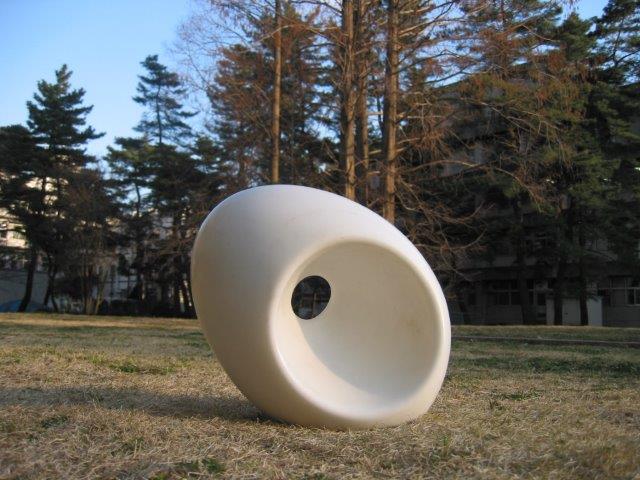In the 35 years since Carole Davenport (www.caroledavenport.com) began dealing in Asian art her clients have come to know how well her perspective as a serious student of art history has allowed her to acquire fine quality Japanese, Chinese and Korean works of art whose aesthetic merit is punctuated by an unparalleled maturity of style and form.
This year CAROLE DAVENPORT JAPANESE ART will present a tour de force of mostly Japanese art works in a show titled “BCE TO NOW: MASTERWORKS OF JAPAN AND CHINA” at the 2014 edition of ASIA WEEK NEW YORK March 14 – 23.
Carole Davenport has exhibited at ASIA WEEK events for 19 years and this year is among 47 international galleries participating in ASIA WEEK NEW YORK. The nine-day celebration of Asian art and culture has underscored New York’s prominence as the best place to find important Asian artworks entering the market. Combining individual gallery exhibitions by leading sources from here and abroad with museum shows and Asian art auctions, ASIA WEEK NEW YORK has become a ‘must see’ destination over the past 15 years.
For 2014 ASIA WEEK NEW YORK Carole Davenport will exhibit at Leigh Morse Fine Arts, 22 East 80th Street. Employing a keen eye and scholarly approach, Davenport has once more assembled a fine Asia week exhibition of select Japanese works of art punctuated with early Chinese ceramics. Taking the date range full circle, she begins with an impressive Jomon beaker vessel, 2500 BCE, to NOW, abstract stone sculptures by award winning Hiroyuki Asano. The intervening centuries reveal treasures, such as a clay sculpture of a kneeling woman from the Horyu-ji pagoda, circa 711 AD, a serene, finely modeled, introspective and beautiful depiction. Davenport says only a few examples have reached the West. She acquired the 8th century Horyu-ji Nara clay sculpture from a European collection. It is 11.5 inches high.
“Langdon Warner’s book, “Tempyo Period Sculpture” illustrated four clay tableaus installed at the base of the pagoda. Presumably my figure comes from those tableaus since it was the only time such representations were done. I know of only three examples. One is in a Rockefeller collection and another is in a Cleveland museum.
“The Tempyo period style of the late Nara period (724-794) was greatly influenced by the Chinese imperial court style of the T’ang dynasty (618-907), a very prolific period. Japanese Buddhist art achieved acclaim for works created in unbaked clay, wood and lacquered cloth, which was molded onto armatures in a technique known as dry lacquer or kanshitsu.”
Additional examples of Nara Tempyo sculptures are illustrated in the book Asuka Buddhist Art: Horyu-ji by Seiichi Mizuno. Legend has it that the few examples that reached the West came in the early part of the 20th century. The figure from Horyu-ji is complimented by a tour de force Chinese Tang dynasty marbleized clay pillow.
Other highlights include a Shinto icon, a Kasuga mandala that depicts a sacred deer in the precincts of Nara with Mt. Kasuga in the background. “Here the coloration is in earth tones with a red torii gate in the lower foreground. The representation is ancient and the scroll dates from the Muromachi period, 15th century.”
Davenport’s show takes a dramatic turn with a striking Momoyama period black lacquer helmet of a bowl shaped hat with visor, neck guard and rabbit ears on top framed by an ushirodate of two opposing crescent moons. She says, “The forms comprising the helmet, the reflective lacquer surfaces, and the contrasting lacquer colors of black, russet and mottled gold and silver of the back ornament transform the object into a work of abstract expressionism rather than merely a samurai protective head piece.” The symbol of the rabbit connoted rapidity in battle and the motif of rabbit in the moon was a popular one derived from Chinese iconography.
“Form and color are hallmarks of my exhibitions,” Davenport states. “Luscious celadon porcelains from Arita and Nabeshima are a treat to the eye, particularly a Nabeshima shishi from the middle Edo period. They contrast with a robust medieval stoneware jar whose clay is kissed by kiln fire, transforming pale clay to tones of russet, pumpkin and gold.”
Calligraphy poem slips by Rengetsu (1791 – 1875) whose backgrounds replicate Heian period torn paper in delicate tones of blue, rose and green, and are executed in Japanese cursive script, find their foil in a Chinese Dehua porcelain bowl of the 17th century whose creamy milk glass interior is carved with a poem in Chinese formal kanji characters.
In the contemporary mode, Asano’s granite and marble sculptures, while monochromatic, rely on form, a circular void, plus the black and white of the stone for visual appeal. Davenport was introduced to the Japanese sculptor’s works on a recent Canadian trip to New Brunswick.
“I really had a strong response to seeing the sculptures I encountered by Hiroyuki Asano. He has worked in Japan as well as in Canada and Italy. I chose a white marble sculpture titled “Breaking Dawn,” which is 14 inches high, and another white marble and black granite work called “Sunset at Mt Fuji” that is 13 inches high.” People beginning a new collection will find these works irresistible.”
Another highlight is a Celadon Porcelain Charger from the early Edo Period circa 1650 that is 14.25 inches. Davenport says, “When the Ming Dynasty kilns fell into disrepair at the end of the reign of the Ming emperors, the Japanese, who were clients of the wares, began their own production in the Arita province in Kyushu. They modeled their works after Chinese prototypes, but the glaze was a paler, cooler color and the central motifs took on a specific Japanese flavor. In this case, it is peony leaves and buds which are shallowly molded in the interior center encircled by incised bands. Even the foot ring appears to be Chinese with its wide unglazed ring burnt orange in the firing. Examples of this form can be found at the Metropolitan and Brooklyn museums as well as in private collections.”
Davenport is a New York native who spent five years apprenticing at a Madison Avenue gallery before opening her private dealership in 1980. Today she offers primarily ceramics and Noh masks, lacquer, paintings, and sculpture. Her skill locating interesting Asian art works has earned her the acclaim of international clients that include major collectors, museums and dealers.
CAROLE DAVENPORT JAPANESE ART has been invited to exhibit in many important art expositions including the Bellman shows in the 1980’s, Arts of Pacific Asia in the 1990’s, and the International Asia Art Fair at the Park Avenue Armory, from 1996-2000. In recent years she gained recognition for staging important exhibitions at a number of well-known New York galleries.
Davenport urges ASIA WEEK visitors to visit her exhibition “to fully appreciate the scope of the exhibition and view the myriad wonderful objects.” ‘)}






